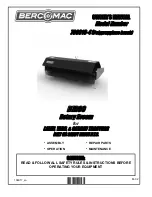
21
More megapixels mean finer detail and larger print sizes. Shown here: print sizes for high quality at 200 dots per inch.
(Sample photo for illustration purposes.)
Anything above 300 dpi is photo quality, shown in green. High quality printing, from 200 to 300 dpi is shown in orange.
Printing below 200 dpi will not yield high quality.
480
640
2.4"
3.2"
200
dpi
VGA
1536
2048
7.7"
10.2"
200
dpi
3 MP
1944
2592
9.7"
13.0"
200
dpi
5 MP
2448
3264
12.2"
16.3"
200
dpi
8 MP
2736
3648
13.7"
18.2"
200
dpi
10 MP
3000
4000
15.0"
20.0"
200
dpi
12 MP
3
x 4 Inches
4 x 6 Inches
5 x 7 Inches
8 x 10 Inches
11 x 14 Inches
16 x 20 Inches
20 x
3
0 Inches
3
MP
512
3
84
3
07
205
146
102
77
VGA
160
120
96
64
46
3
2
24
5 MP
648
486
3
89
259
185
1
3
0
97
8 MP
816
612
490
3
26
2
33
16
3
122
10 MP
912
684
547
3
65
261
182
1
3
7
12 MP
1000
750
600
400
286
200
150
PRINT DPI
PRINT SIZE
KEY:
I
d
eal picture quality
Goo
d
picture quality
Not recommen
d
e
d
The Bayer color filter array permits light of only one
color to fall on each pixel.
Different proportions of Red, Green and Blue can be
added to reproduce any visible hue.
After the lens, light passes from the subject
to an integrated circuit chip called the image
sensor. The sensor occupies the spot where
the film would be on a conventional camera.
Where film converts the incoming light to
chemical changes in the emulsion, the
image sensor converts light first into an
electric charge, then into analog voltage.
Some image sensors also take the next
step, converting the analog voltage into
digital bits.
Pixel
s
a
nd meg
a
pixel
s
While a film image is composed of discrete
chemical grains of irregular size and shape,
a digital image is composed of discrete
squares of color called pixels. The pixels
that form a digital image begin as discrete,
light-sensitive areas on the surface of the
image sensor.
One million pixels is called a “megapixel.”
And it appears that everyone understands
that more megapixels are better. Here’s why.
The more megapixels you have, the bigger
prints you can make at a given image quality.
More megapixels create images ready to
use in printed flyers and brochures. And
higher megapixel counts enable you to crop
the image or use digital zoom – without
sacrificing too much picture detail.
Use the polarizing filter of the Sony VF-30CPKS to control
reflections off water or glass. (Sample photos for
illustration purposes.)
The neutral density filter of the Sony VF-30NK helps control
bright outdoor scenes, for images of more subtlety and
beauty. (Sample photos for illustration purposes.)
The star filter of the Sony VF-30SC lends a dramatic
touch to picture highlights. (Sample photos for
illustration purposes.)
The soft filter of the Sony VF-30SC adds the right touch
of diffusion for romantic portraits, emotional subjects
and atmospheric landscapes. (Sample photos for
illustration purposes.)
Conversion lens adaptors extend the capabilities of
many Sony cameras. So you can shoot wider angles
and longer telephotos as well as take advantage of
polarizing, neutral density, star, and soft filters.
20
The im
a
ge
s
en
s
or
Option
a
l conver
s
ion
len
s
e
s
a
nd filter
s
Attach optional conversion lenses for
additional focal lengths; attach filters
for stunning special effects.
Selected Sony Cyber-shot
®
cameras enable
you to exceed the zoom range of the built-in
lens, thanks to optional conversion lenses.
Or unleash your creativity with optional filters.
The DSC-W55 accepts the optional VAD-WB
lens adaptor, while the DSC-W200 accepts
the optional VAD-WD lens adaptor. These
adaptors enable you to mount optional
conversion lenses and special effects filters.
The DSC-H7 and H9 feature a 74mm lens
thread that accepts optional conversion
lenses and filters directly.
GREEN
RED
BLUE
MAGENTA
YELLOW
CYAN
CAMERA
S
Y
S
TEM
S
CAMERA
S
Y
S
TEM
S
Color
The pixels of the typical image sensor are
sensitive to all colors of light. Without
outside help, they can only see images in
“black and white.” To capture color, they
require the help of a color filter array. This
is a mosaic of microscopic filters that permit
light of only one color – Red, Green or
Blue – onto each pixel. Red, Green and
Blue are the “additive primary” colors. This
means that different proportions of Red,
Green and Blue can be added to reproduce
any visible hue.
S
hooting the digit
a
l w
a
y













































